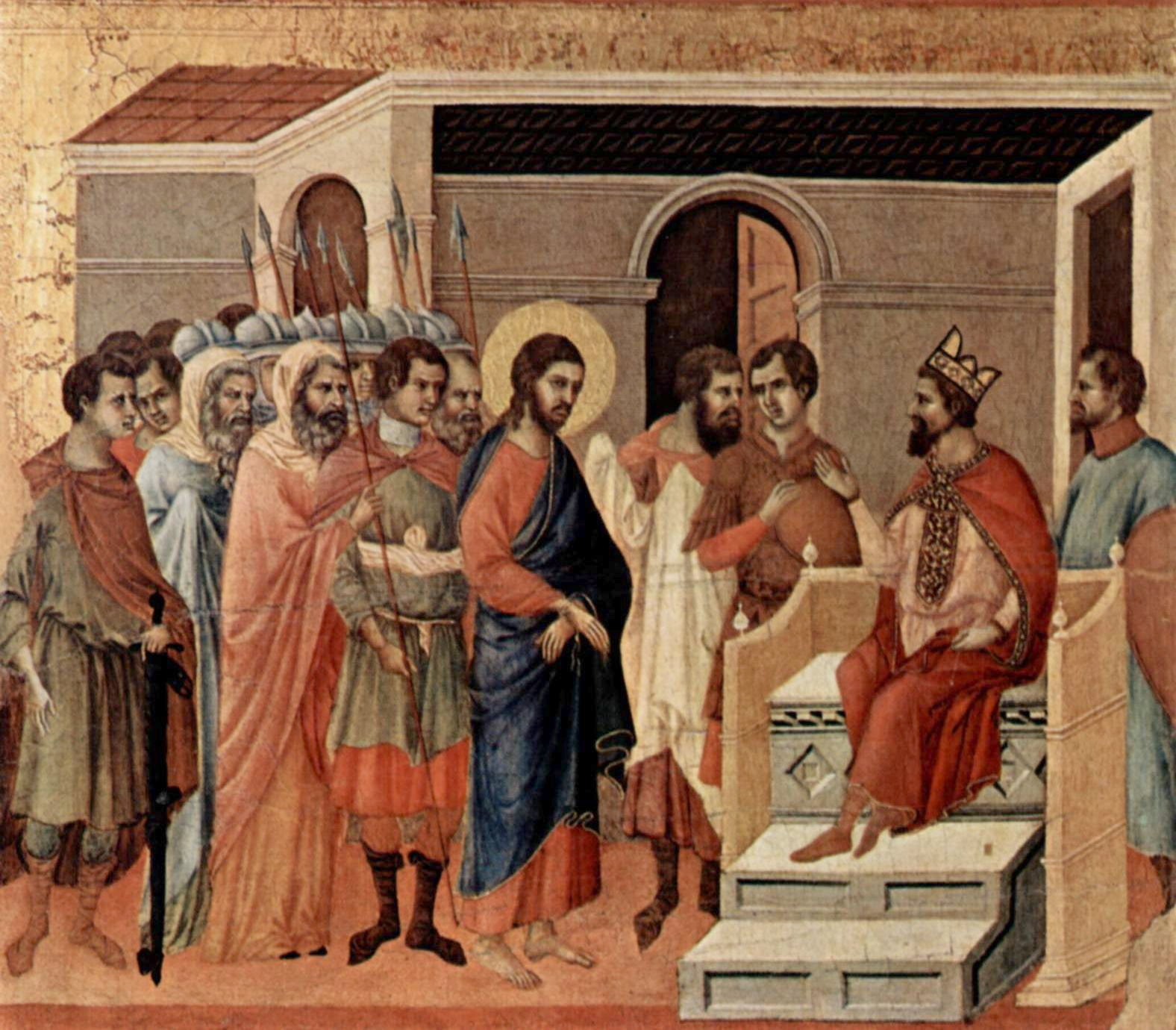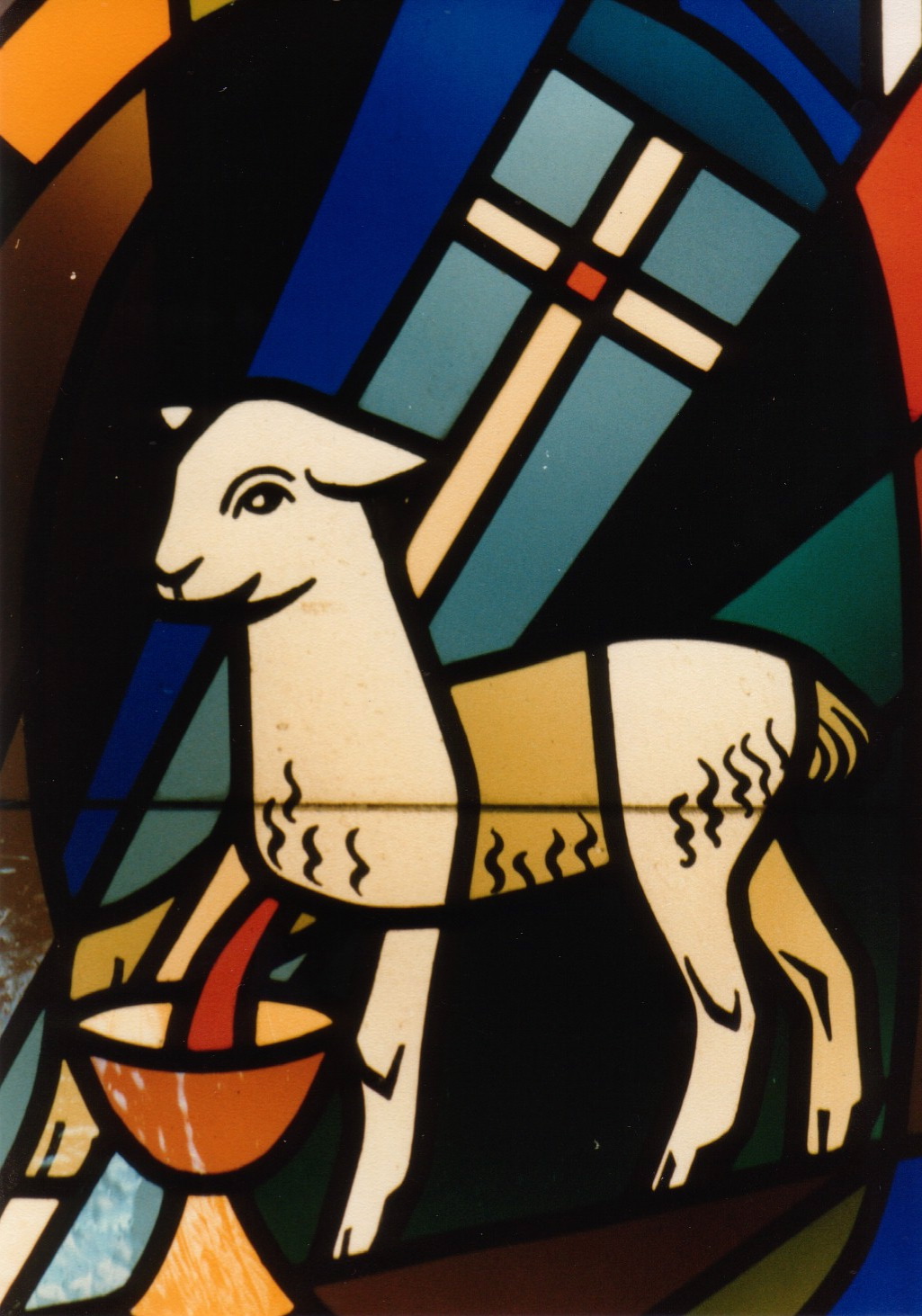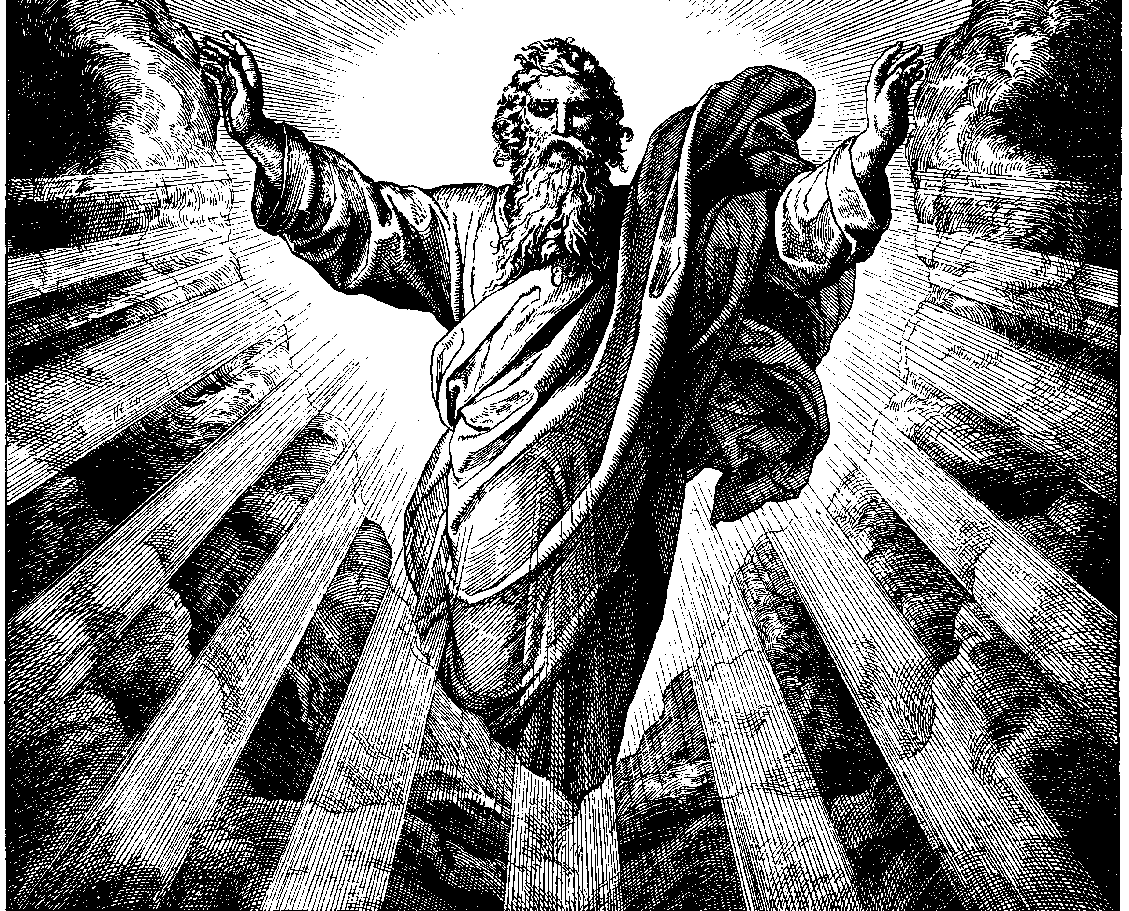|
Jesus At Herod's Court
Jesus at Herod's court refers to an episode in the New Testament which describes Jesus being sent to Herod Antipas in Jerusalem, prior to his crucifixion.''New Testament History'' by Richard L. Niswonger 1992 page 172 This episode is described in Luke 23 ().''The Gospel according to Luke'' by Michael Patella 2005 page 16 Biblical narrative In the Gospel of Luke, after the Sanhedrin trial of Jesus, the Court elders ask Pontius Pilate to judge and condemn Jesus in Luke 23:2, accusing Jesus of making false claims of being a king. While questioning Jesus about the claim of being the King of the Jews, Pilate realizes that Jesus is a Galilean and therefore under Herod's jurisdiction. Since Herod already happened to be in Jerusalem at that time, Pilate decides to send Jesus to Herod to be tried. Herod Antipas (the same man who had previously ordered the death of John the Baptist and, according to some Pharisees, had plotted to have Jesus killed as well, but not to be confused with ... [...More Info...] [...Related Items...] OR: [Wikipedia] [Google] [Baidu] |
Duccio Di Buoninsegna 027a
Duccio di Buoninsegna ( , ; – ), commonly known as just Duccio, was an Italian painter active in Siena, Tuscany, in the late 13th and early 14th century. He was hired throughout his life to complete many important works in government and religious buildings around Italy. Duccio is considered one of the greatest Italian painters of the Middle Ages,Duccio ''Encyclopedia Britannica''. and is credited with creating the painting styles of Trecento Gothic art, Gothic style and the Sienese school. Biography Although much is still unconfirmed about Duccio and his life, there is more documentation of him and his life than of other Italian painters of his time. It is known that he was born and died in the city of Siena, and was also mostly active in the surrounding region of Tuscany. Other details of his early life and family are as un ...[...More Info...] [...Related Items...] OR: [Wikipedia] [Google] [Baidu] |
Mocking Of Jesus
The mocking of Jesus occurred several times, after his trial and before his crucifixion according to the canonical gospels of the New Testament. It is considered part of the passion of Jesus. According to the gospel narratives, Jesus had predicted that he would be mocked (Matthew 20:19, Mark 10:34, and Luke 18:32). The mocking of Christ took place in three stages: immediately following his trial, immediately following his condemnation by Pontius Pilate, and when he was being crucified. The New Testament narratives of Jesus being mocked are filled with irony, while the mockery focuses on the prophetic and kingly roles of Jesus. First stage After the condemnation of Jesus by the Sanhedrin, some spat on him (Mark 14:65). He was blindfolded and beaten, and then mocked: "Prophesy! Who hit you?" (Luke 22:63). This was done by those men who "held Jesus" (Luke 22:63, King James Version). The New International Version translates this as "the men who were guarding Jesus", but Joel B. ... [...More Info...] [...Related Items...] OR: [Wikipedia] [Google] [Baidu] |
Passion Of Jesus
The Passion (from Latin , "to suffer, bear, endure") is the short final period before the death of Jesus, described in the four canonical gospels. It is commemorated in Christianity every year during Holy Week. The ''Passion'' may include, among other events, Jesus's triumphal entry into Jerusalem, his cleansing of the Temple, his anointing, the Last Supper, his agony, his arrest, his trials before the Sanhedrin and before Pilate, his crucifixion and death, and his burial. Those parts of the four canonical Gospels that describe these events are known as the Passion narratives. In some Christian communities, commemoration of the Passion also includes remembrance of the sorrow of Mary, the mother of Jesus, on the Friday of Sorrows. The word ''passion'' has taken on a more general application and now may also apply to accounts of the suffering and death of Christian martyrs, sometimes using the Latin form ''passio''. Narratives according to the four canonical gospels A ... [...More Info...] [...Related Items...] OR: [Wikipedia] [Google] [Baidu] |
Pilate's Court
In the canonical gospels, Pilate's court refers to the trial of Jesus in the praetorium before Pontius Pilate, preceded by the Sanhedrin Trial. In the Gospel of Luke, Pilate finds that Jesus, being from Galilee, belonged to Herod Antipas' jurisdiction, and so he decides to send Jesus to Herod. After questioning Jesus and receiving very few replies, Herod sees Jesus as no threat and returns him to Pilate. It was noted that Pilate appears as an advocate pleading Jesus' case rather than as a judge in an official hearing. In the Gospel of John (18:28–19:13), his "to-ing and fro-ing", that is, Pilate's back and forth movement from inside the praetorium to the outside courtyard, indicates his "wavering position". Background As prefect of Roman Judea, Pilate was subordinate to the Roman legate in Syria. Pilate resided on the coast at Caesarea Maritima. On those occasions when he had to be in Jerusalem, he used the palace compound built by Herod the Great as his praetorium or headqu ... [...More Info...] [...Related Items...] OR: [Wikipedia] [Google] [Baidu] |
Chronology Of Jesus
A chronology of Jesus aims to establish a timeline for the events of the life of Jesus. Scholars have correlated Jewish and Greco-Roman documents and astronomical calendars with the New Testament accounts to estimate dates for the major events in Jesus's life. Two main approaches have been used to estimate the year of the birth of Jesus: one based on the accounts in the Gospels of his birth with reference to King Herod's reign, and the other by subtracting his stated age of "about 30 years" when he began preaching. Most scholars, on this basis, assume a date of birth between 6 and 4 BC. John P. Meier (1991). ''A Marginal Jew: Rethinking the Historical Jesus'', v. 1; ''The Roots of the Problem and the Person'', ch. 11, ... "A Chronology of Jesus Life," pp. 373–433. Anchor Bible Reference Library. D. A. Carson, Douglas J. Moo & Leon Morris. (1992). ''An Introduction to the New Testament'', 54, 56. Grand Rapids, MI: Zondervan Publishing House. Three ... [...More Info...] [...Related Items...] OR: [Wikipedia] [Google] [Baidu] |
Lamb Of God
Lamb of God (; , ) is a Names and titles of Jesus in the New Testament, title for Jesus that appears in the Gospel of John. It appears at wikisource:Bible (American Standard)/John#1:29, John 1:29, where John the Baptist sees Jesus and exclaims, "Behold the Lamb of God who Salvation in Christianity, takes away the Sin#Christianity, sin of the world." It appears again in wikisource:Bible (American Standard)/John#1:36, John 1:36. Christian doctrine holds that a God the Son, divine Jesus chose to suffer crucifixion of Jesus, crucifixion at Calvary to save the world from its sins. He was given up by God the Father, divine Father, as an "agent and servant of God in Christianity, God" in carrying away the sins of the world. In Christian theology the ''Lamb of God'' is viewed as both foundational and integral to the message of Christianity. A lion-like lamb that rises to deliver victory after being slain appears several times in the Book of Revelation. It is also referred to in Pauline w ... [...More Info...] [...Related Items...] OR: [Wikipedia] [Google] [Baidu] |
God The Father
God the Father is a title given to God in Christianity. In mainstream trinitarian Christianity, God the Father is regarded as the first Person of the Trinity, followed by the second person, Jesus Christ the Son, and the third person, God the Holy Spirit. Since the second century, Christian creeds included affirmation of belief in "God the Father ( Almighty)", primarily in his capacity as "Father and creator of the universe". Christians take the concept of God as the father of Jesus Christ metaphysically further than the concept of God as the creator and father of all people, as indicated in the Apostles' Creed where the expression of belief in the "Father almighty, creator of heaven and earth" is immediately, but separately followed by in "Jesus Christ, his only Son, our Lord", thus expressing both senses of fatherhood. Christianity Overview In much of modern Christianity, God is addressed as the Father, in part because of his active interest in human affairs on the ... [...More Info...] [...Related Items...] OR: [Wikipedia] [Google] [Baidu] |
Hughes Oliphant Old
Hughes Oliphant Old (April 13, 1933 – May 24, 2016) was an American theologian and academic. Until his retirement in 2014 he was the John H. Leith Professor of Reformed Theology and Worship at Erskine Theological Seminary. Previously he had taught at Princeton Theological Seminary. Biography Old was born April 13, 1933, and received his Bachelor of Divinity from Princeton Theological Seminary in 1958 and his Doctor of Theology from the University of Neuchâtel in 1971. His first charge was minister of the Penningtonville Presbyterian Church in Atglen, Pennsylvania. In the late ‘70s he served as pastor at Faith Presbyterian Church in West Lafayette Indiana where he also led students at Purdue University in bible study. In 1977 he led a mission to the Yucatán peninsula to build a small chapel. He was appointed a member of the Center of Theological Inquiry in Princeton, NJ The Municipality of Princeton is a Borough (New Jersey), borough in Mercer County, New Jersey, Unite ... [...More Info...] [...Related Items...] OR: [Wikipedia] [Google] [Baidu] |
John Calvin
John Calvin (; ; ; 10 July 150927 May 1564) was a French Christian theology, theologian, pastor and Protestant Reformers, reformer in Geneva during the Protestant Reformation. He was a principal figure in the development of the system of Christian theology later called Calvinism, including its doctrines of predestination and of God's Monergism, absolute sovereignty in the Christian soteriology, salvation of the human soul from death and Damnation, eternal damnation. Calvinist doctrines were Augustinian soteriology, influenced by and elaborated upon the Augustinian and other Christian traditions. Various Reformed Christianity, Reformed Church like Continental Reformed, Congregationalism, Presbyterianism, Waldensians, Reformed Baptists, Baptist Reformed, Calvinistic Methodism, Calvinist Methodism, and Reformed Anglican Churches, which look to Calvin as the chief expositor of their beliefs, have spread throughout the world. Calvin was a tireless polemicist and Christian apolog ... [...More Info...] [...Related Items...] OR: [Wikipedia] [Google] [Baidu] |
Bible (American Standard)/Mark
The Bible is a collection of religious texts that are central to Christianity and Judaism, and esteemed in other Abrahamic religions such as Islam. The Bible is an anthology (a compilation of texts of a variety of forms) originally written in Hebrew, Aramaic, and Koine Greek. The texts include instructions, stories, poetry, prophecies, and other genres. The collection of materials accepted as part of the Bible by a particular religious tradition or community is called a biblical canon. Believers generally consider it to be a Biblical inspiration, product of divine inspiration, but the way they understand what that means and Biblical hermeneutics, interpret the text varies. The religious texts were compiled by different religious communities into various official collections. The earliest contained the first five books of the Bible, called the Torah in Hebrew language, Hebrew and the Pentateuch (meaning 'five books') in Greek. The second-oldest part was a collection of narr ... [...More Info...] [...Related Items...] OR: [Wikipedia] [Google] [Baidu] |









